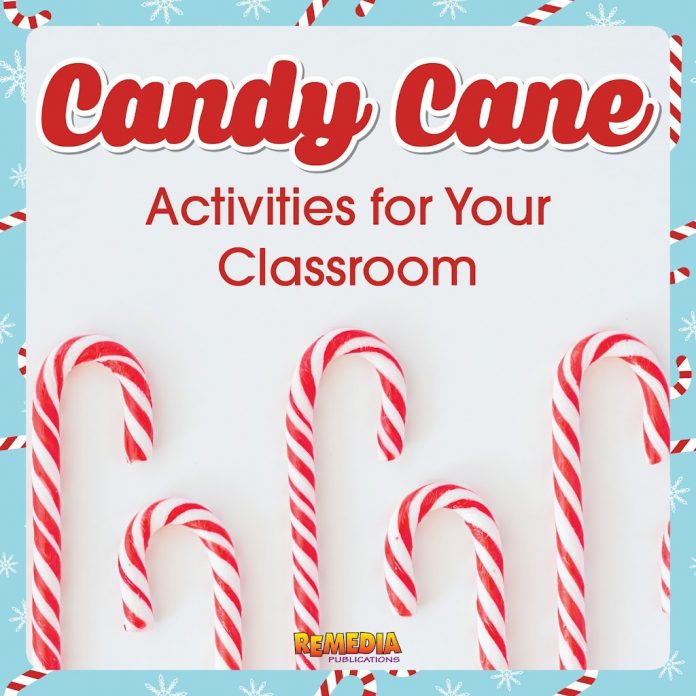Visions of candy canes will be dancing in your students’ heads after they complete these candy cane themed (and of course educational) activities! In honor of National Candy Cane Day, on December 26, these fun activities are great for your students’ minds as well as their sweet tooth.
Reading
Download our Candy Cane Day {Freebie}. Students will read a short story on the history of the candy cane and complete a candy-cane themed crossword puzzle.
Matching Math Game
Use this free download to create pairs of candy canes. Write the following problems on the candy canes: 3+1, 2+3, 3+3, 6+1, 4+4, 2+2, 5+0, 4+2, 4+3, 1+7. Cut out and laminate each candy cane. Have students “hook” the candy canes together, matching those that would have the same answers.
Tip: You can do this activity with rhyming words, phonics sounds, multiplication problems, and so on!
Game
Give each student one candy candy and a cup. In groups of two to four, students will gather around a pile of candy canes. Have students put their candy in their mouth so that the hook is sticking out. Without using their hands, students must hook and pick up candy canes and transfer them to their cup. Whoever collects the most candy canes in 60 seconds wins!
Sensory Boxes
You will need:
- A Bag of Candy Canes
- 4 shoe boxes with lids or empty tissue boxes
- Scissors (to cut holes in boxes not necessary if you use tissue boxes
- Tape (to keeps lids closed, not necessary use tissue boxes
- Blind fold or over-sized Santa hat
Put unwrapped candy canes in the 4 boxes and label them:
Smell – Poke small holes in this box so that the students can smell the contents, but not see inside the box
Touch – Cut a hand-sized hole in this box. Have the children put their hands in the box and feel the candy cane
Sound – No holes necessary on this box. Tape the lid onto this box extra tight. Instruct the students to rattle and shake the box.
Taste – Blind fold students with the over-sized Santa hat and let them lick the candy cane. The box for this sense is strictly to hide the candy cane from them so students can’t see what they are tasting.
Sight – for a unique and fun challenge, skip sight. Students will all get to use sight when you discuss at the end.
Have students sense only one box each. Allow a handful of students to sense all four boxes. This will add to your discussion later and improve students’ understanding of their senses.
After each student senses their assigned box, have them return to their desk and write down their guesses. Even have them draw a picture of their guess.
When the students have made their guesses, discuss what they felt, smelled, tasted, and heard. Encourage them to use descriptive words—sticky, cold, sweet, crunchy, rattle, and so on.
Ask students why they guessed what they guessed. Use this opportunity to dive into a deeper discussion on the five senses.
Tip: You could even create four stations, one for each sense, with each box and a set of instructions. Send groups of students around to each station. Students should make notes and discuss what they hear, feel, smell, and taste at each station. Through the power of observation they should draw conclusions as to what they’ve observed. Discuss further as a class.










